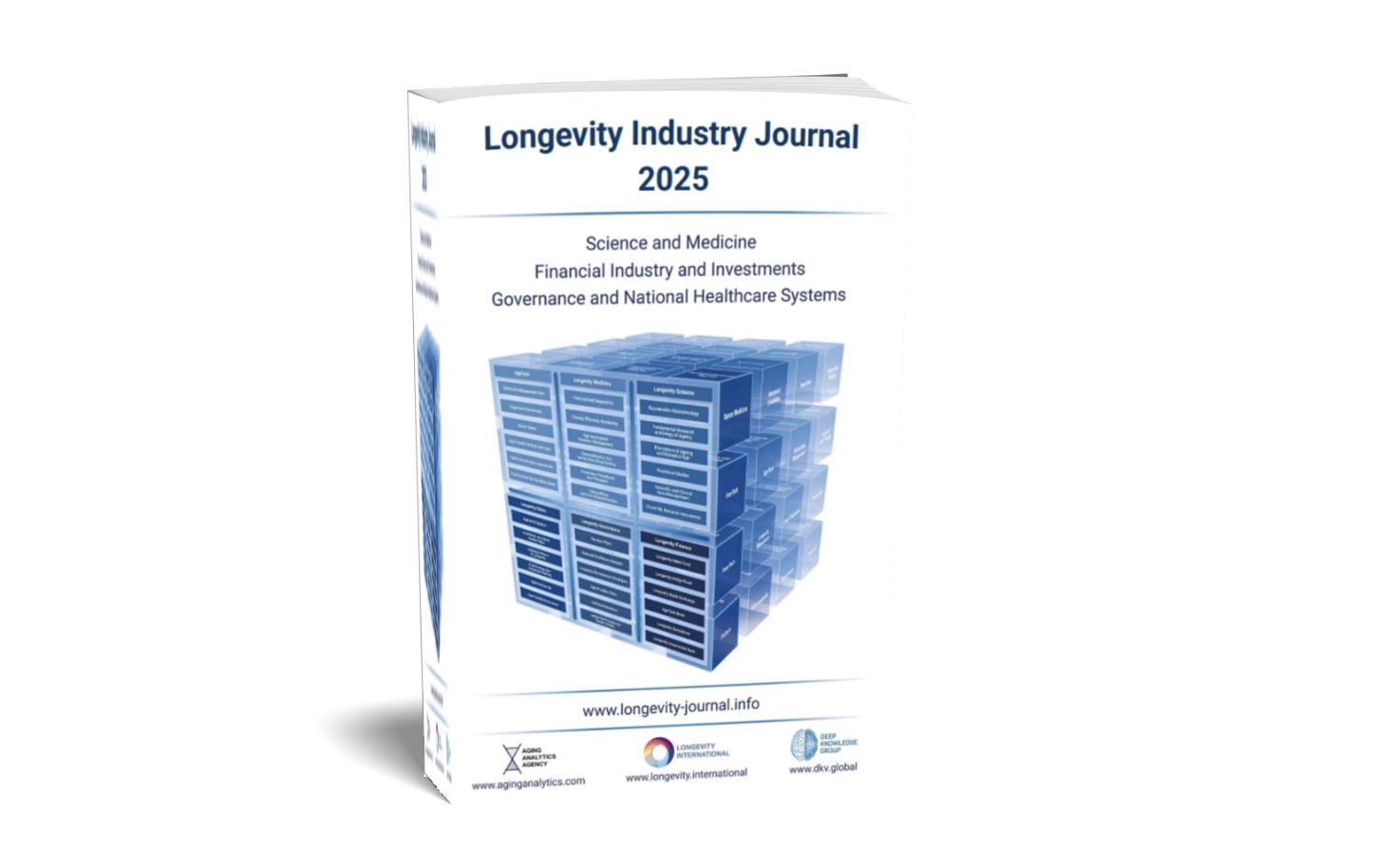- Longevity Journal

- Sep 24
- 4 min read
Updated: Sep 25
In the second half of 2025, we find ourselves at the intersection of a profound transformation: the rise of Longevity Industrialization. This emerging global megatrend goes far beyond the simplistic notion of living longer—it is reshaping the way we understand human health, wealth, and the very fabric of our societies. Longevity is rapidly evolving from a niche focus on cosmetic products and wellness trends to a complex, multifaceted industry that touches almost every aspect of our lives, driven by technologies like AI, DeepTech, bioengineering, and precision medicine.

The Intersection of Groundbreaking Technologies
The foundation of Longevity Industrialization lies in the convergence of a variety of DeepTech sectors, where artificial intelligence (AI), biotechnology, neurotech, and even space medicine are interwoven. These innovations are driving breakthroughs not only in how we extend our lives but in how we enhance the quality of those lives across longer lifespans.
AI and Data Science: AI is revolutionizing the way we approach health, enabling real-time monitoring of biomarkers and creating precision medicine that’s tailored to an individual's unique biological makeup. AI-powered aging clocks and personalized health systems are now poised to optimize healthspan, or the years lived free from disease.
Biotechnology and Regenerative Medicine: Innovations in gene therapy, stem cell research, and tissue engineering are opening new possibilities for treating age-related diseases, possibly reversing damage done by time. The promise of regenerating tissues and organs could reshape the way we think about age-related degeneration and the need for organ transplants.
NeuroTech: Advances in NeuroTech, from brain-computer interfaces to cognitive enhancement through AI and virtual reality (VR), are providing solutions to extend cognitive health, an often-overlooked aspect of longevity. Technologies like NeuroMedicine and mental health AI therapies are ensuring we don’t just live longer, but maintain mental acuity and emotional well-being.
Economic and Societal Shifts: The Longevity Economy
The megatrend of Longevity Industrialization is creating a paradigm shift in economies across the world. It’s not just about extending life expectancy; it’s about creating a robust Longevity Economy where health and wealth go hand in hand.
Wealthspan: Just as longevity extends lifespan, wealthspan—the length of time an individual is financially secure—is expanding. Financial sectors are responding to this demographic change with Longevity Finance, including Longevity WealthTech and InsurTech. Investors are increasingly seeing health as wealth, with products designed to help people plan for longer retirements, personalized wealth management strategies, and health-focused financial instruments.
Longevity Finance: With the aging population, there is a rising demand for financial products that help individuals plan for a lifespan that may exceed 100 years. Pension funds, life insurance, and wealth management services are being revamped to include the financial implications of living longer lives, often with Longevity Banks offering investment tools centered on health outcomes.
Global Health Systems: As the aging population swells, national healthcare systems are being forced to adapt. Preventive care, personalized medicine, and AI-driven diagnostics are transforming public health strategies to emphasize long-term health rather than reactive treatments. The integration of AgeTech and AssistiveTech is helping older adults live more independently, easing the burden on healthcare systems worldwide.

Impact on National Economies and Health Systems
The impact of Longevity Industrialization extends far beyond healthcare—it's also reshaping the global economy in ways previously unimaginable.
Healthcare Transformation: National healthcare systems are shifting toward prevention-first models, where the focus is on early detection and personalized interventions. With the rise of biomarkers and AI-enabled health monitoring, systems are becoming more efficient, reducing costs, and improving long-term outcomes. This shift is expected to alleviate pressure on overburdened health systems, especially in countries experiencing rapid aging.
Policy and Governance: Governments are beginning to integrate Longevity policies into their long-term economic and social planning. Longevity Urbanism—the design of cities that cater to older populations—is a key part of this. Smart cities that integrate Age-Friendly Real Estate, wellness hubs, and healthcare technologies are emerging as models for sustainable living for all ages.
Economic Growth: As people live longer, they remain active in the workforce for more years, contributing to economic productivity. Longevity-driven industries, from biotech to digital health, are becoming significant economic drivers. The Longevity Industry, valued in the trillions of dollars, is poised to reshape global trade, investment, and economic policies, benefiting from cross-sector collaboration and technological innovations.
The Future of Longevity: A Strategic Opportunity
The Longevity Industrialization megatrend represents one of the most exciting growth areas for both investors and entrepreneurs. With its interconnected sectors spanning bioengineering, healthcare, finance, technology, and urban planning, it offers unprecedented opportunities for long-term strategic planning.
Investment Potential: As the world’s largest Longevity Industry database continues to grow, it will provide essential tools for AI-driven market forecasting and investment strategies, allowing businesses to predict where the next wave of innovations will arise. The demand for solutions to aging populations is set to soar, with investment opportunities in Longevity finance, biotechnology, assistive technology, and AI-driven healthcare.
Technological Convergence: At its core, Longevity Industrialization is the result of cross-disciplinary innovation. Technologies that were once siloed are now converging to produce holistic, groundbreaking solutions. Longevity tech ecosystems are thriving in regions such as the Swiss Longevity Valley and the Longevity Oases in the Gulf, signaling the rise of global hubs for aging-related innovation.

Shaping the Future of Longevity
As we move through 2025 and beyond, Longevity Industrialization will continue to evolve, driven by technological breakthroughs and societal shifts. This megatrend is not just a chance for a longer life—it’s an opportunity for healthier, wealthier, and more productive living. The challenges and opportunities it presents will require concerted action from governments, industries, and individuals alike.
Longevity Industrialization will be a defining force in the coming decades, and those who understand and engage with this transformative megatrend now will be the ones who shape the future. Stay tuned for our next article, where we’ll explore how AI and data science are driving the evolution of Longevity R&D.
Or meanwhile order your copy of Longevity Industry Journal 2025 at: www.longevity-journal.info/2025
Comments